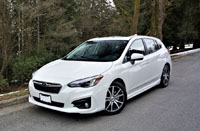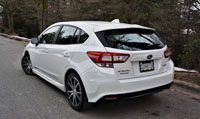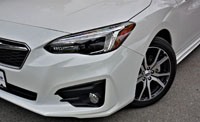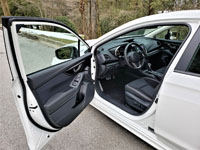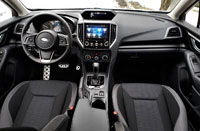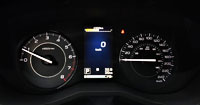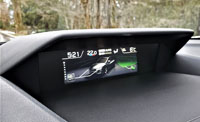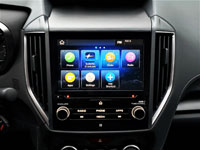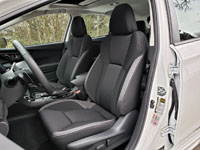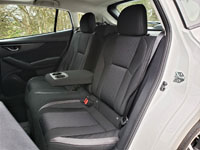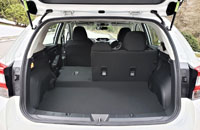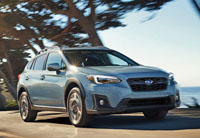
With the current U.S. administration loosening new vehicle emissions restrictions, it might not seem prudent to announce an all-electric vehicle strategy, but the European Union, China and many other markets are tightening emissions regulations, with respect to vehicles at least. Europe will soon be warming its homes and powering businesses with new fossil fuel pipelines from Russia, while China seems to be building coal-fired electric power plants (to no doubt fuel such electric cars) faster than anyone can keep count.
This said it only makes sense that Subaru would want to continue selling into these markets once internal combustion engines (ICE) are no longer allowed, thus it’s planning to soon offer battery power to its lineup, with the eventual result being 100-percent electric.
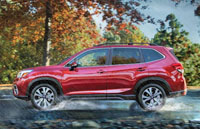
The electrification process will start off with a new hybrid-electric drivetrain with motive electric components sourced from Toyota, which holds 16.5-percent of Fuji Heavy Industries (FHI) stock (Subaru’s parent company). The 2014-2016 Subaru Crosstrek Hybrid was the first hybrid-electric project the two automakers undertook, but with few buyers it was cancelled after just three years.
A move to hybrids and then electric powertrains is a risky move for any automaker, with the risk even greater for small, niche brands like Subaru. The quirky brand has made a name for practical yet fun-to-drive cars and crossover SUVs powered by its unorthodox horizontally opposed “boxer” engine. While other brands like Volkswagen, with its Type 1 Beetle, Type 2 van, Type 3 and 4 sedan/coupe/wagon, and Type 14/Type 34 Karmann Ghia, or Porsche with its 911/912, 914 and 718 models, and even Ferrari with its 1973-1976 Berlinetta Boxer, 1976-1984 BB 512, 1984-1991 Testarossa, 1991-1994 512 TR and 1994-1996 F512 M), have offered this unique engine type as well, the Italian supercar maker and VW no longer do, while Porsche only provides it in its sports car range which makes up much fewer sales than its sedan and SUV lineup.
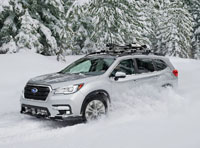
Speaking of model lineups, the best-selling Subaru in Canada last year was the Crosstrek subcompact crossover SUV at 15,184 units, followed by the Forester compact SUV with 13,059 deliveries, the Outback mid-size five-passenger crossover with 10,972 new sales, the Impreza compact sedan and hatchback with 9,065 new buyers, the Ascent mid-size seven-passenger crossover SUV with 4,139 new sales, the WRX/STI performance sedan with 2,707 new customers, the Legacy mid-size sedan at 1,752 clients, and the BRZ compact sports coupe with 647 new sales last year. To find out more about these cars and crossover SUVs, including their trim, package and individual option pricing, plus available rebate information, financing/leasing promotions, and dealer invoice pricing that could save you thousands, click directly on their names.
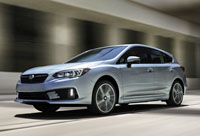
All of the unique models just mentioned makes it clear that retaining as much of its distinctive brand character as possible while moving into the brave new world of automotive electrification is important for Subaru, yet the horizontally opposed engine configuration will eventually have to go if it’s plans for full electrification materialize. Fortunately all-wheel drive (AWD being standard with most of its models) can stay for both its future hybrid and electric cars and SUVs.
The short-lived Crosstrek Hybrid came standard with AWD, while incorporating Toyota’s hybrid technologies and Subaru’s 2.0-litre boxer engine. This allowed it to perform and sound like other Subaru models, keeping its brand identity intact. Subaru doesn’t want badge-engineered cars in its lineup, such as the Toyota/Subaru co-developed Subaru BRZ/Scion FR-S/Toyota 86, or for that matter the Yaris Sedan that was merely a Mazda2 with a Toyota front fascia and Toyota badging. Doing something similar with such a niche automaker would run the risk of diluting its hard-won brand image.

“Although we’re using Toyota technology, we want to make hybrids that are distinctly Subaru,” commented the brand’s chief technology officer, Tetsuo Onuki, to Reuters news agency. “It’s not only about reducing CO2 emissions. We need to further improve vehicle safety and the performance of our all-wheel drive.”
While Onuki-san was clear to point out that all-wheel drive would continue as a key Subaru character trait while it adapted to hybrid and electric technologies, AWD is becoming more common with its main rivals. Nissan and Mazda recently introduced redesigned passenger cars with optional AWD (the Mazda3 now providing an AWD alternative to Subaru’s Impreza, while Nissan’s Altima now makes AWD standard in Canada and therefore becomes a key rival to Subaru’s mid-size Legacy), and even though Subaru’s trademarked “Symmetrical AWD” is believed to be more capable in inclement conditions than challengers’ AWD systems, it’s not known if its even power delivery can be achieved effectively with an electric powertrain. What’s more, AWD often comes standard with electric vehicles, so it’s quite likely the AWD traction advantage Subaru cars currently enjoy won’t be unique in 15 years, making the Japanese automaker no more unique than any other brand.
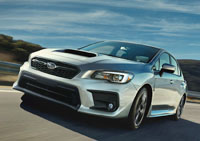
On the subject of electric vehicles, Subaru and Toyota are in the process of co-developing an electric powertrain that will result in an electric vehicle per brand sometime this decade, with additional models to follow. Subaru is saying that hybrid and fully electric models will make up 40 percent or more of its annual worldwide production by 2030, with the hybrids no longer available five or so years after that.
In today’s fast-paced world, particularly in the automotive sector, 2030 is a long way off, and of course a lot can happen with respect to battery development, advancements in other alternative fuels, progress with car/ride sharing, etcetera, as well as geopolitical concerns that are completely out of an automaker’s influence (much of which can be negative), so changes to Subaru’s plans will be more than likely.
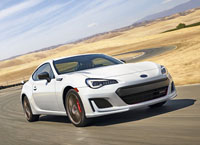
This said, the positive for Subaru is its ability to garner green accolades right now without having to take much initial action, which can make its customers feel as if their chosen brand is well on its way toward electrification, yet the ultimate target is so far off into the future that its long-term plans can be changed anytime along the way. Of course, some new hybrid models are likely within the next few years, plus at least one EV, so there is forward progress being made.
It should be noted that Subaru isn’t alone in making such long-term electrification plans, with GM having pitched a U.S. national environmental program in 2018 designed to motivate all carmakers to make at least 25 percent of their lineups into zero-emissions vehicles; Ford introducing $11.5 billion worth of new spending toward a dozen new hybrid and EV models by 2022; Toyota, as part of its Environmental Challenge 2050 program, pledging to lower vehicle life-cycle emissions by 25 percent plus by 2030, while targeting 2050 for eliminating 100-percent of their carbon emissions; Mercedes-Benz vowing to make at least half of its passenger car lineup electric by 2030, plus achieve full carbon neutrality within the next two decades.
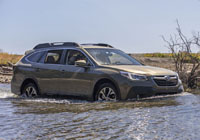
Volvo may be vying to become the world’s greenest automaker, however, due to its commitment for half of its passenger cars to become electric by 2025, plus also make sure each cars’ life-cycle carbon footprint is reduced by 40 percent in five years time as well. It also wants the carbon output of its entire global operations (including suppliers) to be lowered by 25 percent by 2025, and finally has a plan to use a minimum of 25-percent recycled materials in its vehicle production by this very same year.
While Subaru’s plans aren’t quite as ambitious as Volvo’s, the Japanese automaker’s announcement marks a major step for such a niche automaker, and could be seen as a significant risk if electric vehicle take rates don’t improve enough to overcome investment costs.
Story credits: Trevor Hofmann
Photo credits: Subaru

